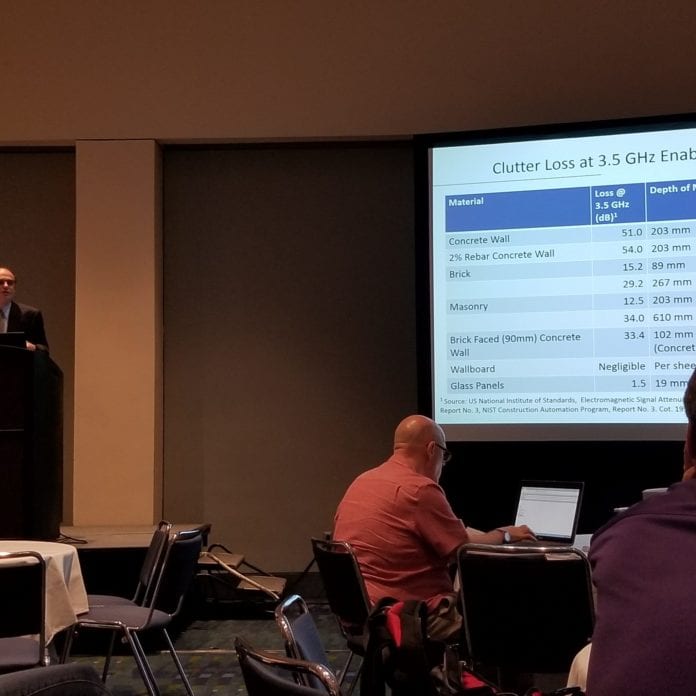CHARLOTTE, N.C.–Commercial wireless services in the Citizens Broadband Radio Service spectrum are getting closer and closer to reality, with devices expected to arrive soon and certification efforts underway.
Speakers at a CBRS-focused program at the Connectivity Expo touched on a number of recent developments in the CBRS ecosystem, from the launch of the CBRS Alliance’s certification program and OnGo brand for services in the CBRS band at 3.5 GHz, to Verizon testing CBRS in its commercial network and the carrier’s expectation that CBRS-capable devices will begin emerging by the end of this year.
But there’s still one big question mark: the Federal Communications Commission has yet to decide on a notice of proposed rulemaking that would change the geographic size and the length of the term of the Priority Access Licenses, the second tier of the three-tiered CBRS framework.
Richard Bernhardt, who is national spectrum advisor for the Wireless Internet Service Providers Association and represents WISPA within WinnForum (which works with the CBRS Alliance in establishing technical standards and certification for CBRS networks) said that the original rules called for selling PALs on the scale of census tracts, of which there are about 70,400 in the U.S. Comparatively, he added, there are about 440 partial economic areas which could end up being the defining area for licenses. And there won’t be just one PAL auctioned in each area, there are seven PAL slots that will receive — as the name suggests — priority access to the spectrum. Multiple PAL blocks of 10 MHz each can also be aggregated, up to 40 MHz of spectrum.
Most speakers on Monday said that they expect that the FCC may come to some kind of compromise with a combination of larger and smaller license areas, but they anticipate that license terms (currently three years with one three-year extension) will be extended — most likely to 10 years with more options to renew them.
Bernhardt said that the industry is hoping the FCC will settle on terms sooner rather than later — it won’t be at the June meeting, he noted, since the NPRM isn’t on the agenda, but he said “we suspect it will be sometime in the near future, right after that.”
Incumbents in the band who will get protected access include naval radar systems, satellite-based ground systems and some wireless internet service providers, known as grandfathered wireless users. The latter are slated to be transitioned off the band by 2020, although Bernhardt cautioned that there may be some extensions. The third tier is General Authorized Access, or GAA, which offers the ability to use the band in an unlicensed fashion — although devices still have to registered with spectrum access systems so that devices in the other two bands are protected and interference can be managed while the spectrum resources are shared with other GAA devices.
Dr. Preston Marshall, engineering director for Google and vice chair of the CBRS Alliance, said that wireless networks have shifted from coverage toward capacity — and that while “beachfront” spectrum in bands such as 600 MHz, 700 MHz and 800 MHz is great for penetration and coverage, CBRS is well-suited to indoor densification and multiple uses, precisely because of the fact that in an indoor scenario, it will be insulated from external networks and even from other floors of a building due to its relatively poor penetration capability.
“What you do indoors is going to be able to coexist with what people do outdoors,” Marshall said. In fact, he went on, between the high capacity that CBRS can potentially support with 150 MHz of spectrum and the spectrum characteristics, CBRS starts to look quite a bit like 5G at millimeter wave.
“5G may look more like [CBRS] than it does like 4G,” he said.

